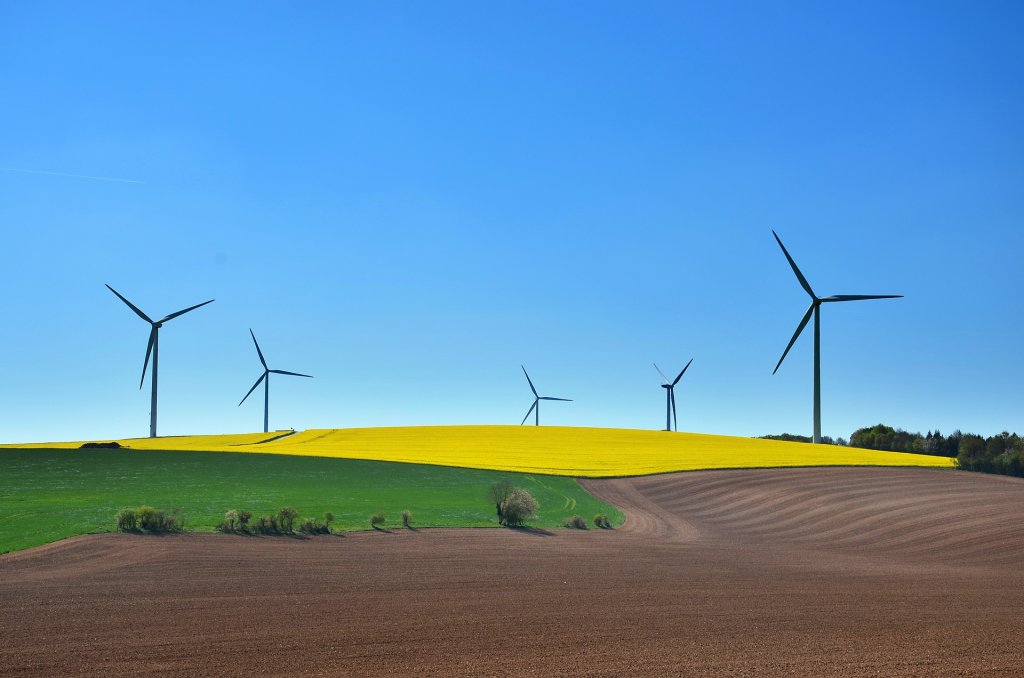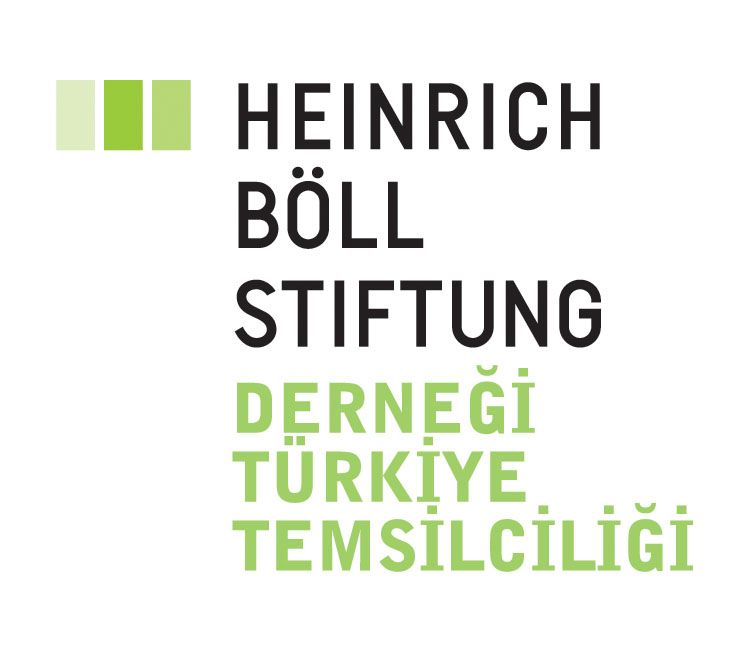How Close Is Turkey to the Sustainable Energy Transition? – Volkan Ş. Ediger

Energy has been the most important economic and social
development input, especially for societies after the Industrial Revolution.
Although the share of total primary energy in the gross domestic product (GDP)
is not very high, energy is vital for economies. For example, the share of 160
million tons-oil-equivalent primary energy consumed in Turkey in 2021 in GDP is
around 10 percent despite the extreme rise in energy prices and inflation. A
healthy development cannot be achieved if cheap and clean energy cannot be
provided uninterruptedly in sufficient quantity and quality, that is if energy
supply security cannot be guaranteed. For this, the most appropriate source
diversity should be ensured by providing the sources in the country’s energy
basket at the right rates.
The energy sources consumed by humanity have changed over
time, and there has been a transformation from wood to coal, which began to be
consumed with the invention of fire, and from there to oil and natural gas.
When the most consumed energy source in any period began to be insufficient for
production, a new energy source came into play, and this resource, which was
more effective than the old one, increased its share in the energy basket over
time and became the most consumed energy source. The basic dynamic of this
change is that the thermal value of the new energy source is higher, and its
use is cleaner and more practical. New energy sources have always made
significant contributions to the development of societies, and the production
function has been continuously increased thanks to the new technologies developed.
Unfortunately, Turkey has not been able to keep up with
the global changes in energy sources, especially their domestic production. For
example, in 1765, with the commercialization of Thomas Newcomen’s steam engine
by James Watt, mechanization of manufacturing forms began, and coal production,
which had been used for a while, increased rapidly in England, America, Germany,
and France thanks to the external combustion engine. In Turkey, the first
regular coal production started in 1848 in the hard coals in the Zonguldak
Basin. On the other hand, oil production began with the Drake well drilled in
the USA in 1859, and its use increased rapidly from the beginning of the
twentieth century with the development of internal combustion engines in England, Germany, and the USA. In
Turkey, the first oil production was carried out in the Raman Oil Field
in 1948. While Western societies that carried out a successful energy transition
increased their economic and social welfare thanks to fossil fuels consisting
of coal, oil, and natural gas, Eastern societies, especially the Ottoman Empire
and the Republic of Turkey, lagged in this race.
Today, we are close to the end of the Fossil Fuel Age
that began with the Industrial Revolution. Because their reserves are limited,
they cause climate change due to carbon dioxide emissions, and the geopolitical
tensions caused by their irregular distribution on the earth, we are trying to
give up the consumption of these fuels. For this purpose, the concept of
sustainability has been developed since the UN report titled Our Common Future published in 1987,
and institutions such as the United Nations Framework Convention on Climate Change (UNFCCC) and the Intergovernmental Panel on Climate Change (IPCC) have been organized under
the roof of the UN. In particular, the Kyoto Protocol signed in 1997 has been
very important in bringing some commitments. However, despite all these
international initiatives, there has not been enough success in the new energy
transition, and a significant decrease in carbon dioxide emissions has not been
achieved. The Millennium Development Goals, later adopted in 2000, were also
unsuccessful.
Upon this, more serious steps were started to be taken in
2015. In September, the Sustainable
Development Goals (SDGs) were adopted.
Some 17 SDGs recommend preventing climate change and efficient and clean energy
use. In December 2015, The Conference of the Parties (COP 21) gathered in Paris agreed to halve carbon dioxide emissions by 2030 and to
reach the net-zero target by 2050. The European Union was the first institution
to enact these new targets and began implementing them with the European Green
Deal program adopted in January 2020.
According to the latest data from Net Zero Tracker, 139 countries
responsible for 83 percent of total emissions and 799 of the 2000 largest
companies have already declared zero-emission targets. That’s 91 percent of the
world economy and 80 percent of the population.
Despite all these positive developments, whether the goals
can be achieved is seriously debated. Because in 2021, 82.3 percent of the
total primary energy consumed in the world consisted of fossil fuels. Of these,
31 percent was oil, 27 percent was coal, and 24 percent was natural gas. The
share of renewable energy was only 13.5 percent, of which 6.8 percent consisted
of hydropower, which many experts did not include in the scope of renewables.
In other words, the share of renewable energy in the real sense is only 6.7
percent, and it seems difficult to increase this rate to 100 percent in about
30 years.
The most important problem is that this time the
substitution of energy resources will not be in the form of adding new
resources and continuing to use the old ones as in previous transitions, but in
such a way as to force the old ones to be completely abandoned. Moreover, while
the basic dynamics of energy source shift were economic in previous ones, this
time, they are purely political. Another challenge is that while there was
always a hegemonic power in the previous ones, and the energy source it uses
the most is the most consumed globally, this time, more than one option
emerges. For example, coal was the dominant energy source during the Pax Britannica era, and oil was the
dominant energy source during the Pax Americana period. The Pax Americana, which was
dominant for a short time after the collapse of the Soviet Union in 1991, is no
longer maintained, and the global distribution of power allows new poles to
emerge.
This situation brings up the “Multiple Energy Transition” model that I proposed earlier
(Ediger 2019 and Ediger et al. 2021).[1]
Accordingly, in the foreseeable future, there will be at least four global
poles led by the US, China, the EU and Russia, and each pole’s energy
preferences will develop differently from each other. For example, the U.S. has
become the country that produces the most oil and gas in the world by focusing
on unconventional energy sources consisting of shale gas and oil developed
since 2007. Russia, constantly racing with the United States for hydrocarbon
production, also maintains its undisputed superiority in conventional oil and
gas. On the other hand, China is the country that produces and consumes coal,
the most important domestic resource in the world, while focusing on renewable
energy technologies to offset the emissions generated by coal. Today, China has
become the country that has developed wind and solar technology the most and
has come out on top in renewable energy. The EU, which does not have enough
fossil fuels, is trying to reduce energy consumption with its efficiency
improvements while increasing the share of renewable energy in the energy
basket.
The goal of 100 percent renewable energy is also widely
discussed. The fact that renewable energy depends largely on geography and
climate prevents it from being used at all hours of the day. Average capacity
factors on a global scale have been in the range of 20-25 percent in the wind
and 10-15 percent in solar PV in recent years. The desired level has not been
reached in the storage systems that will make it possible to use these
resources at any time. None of the developed storage technologies can yet
provide 100 percent conversion of the stored energy, resulting in a loss of
10-30 percent. The rapid development work on storage systems needs to be
further intensified, and efficiency increased. However, the energy intensity of
renewable sources has also approached its limits. The efficiency of today’s
wind turbines has exceeded 45 percent, approaching the Betz Limit of 59.3
percent, and the efficiency of silicon and perovskite solar cells has reached
around 25-26 percent, approaching the Shockley-Queisser Limit of 33 percent. In
other words, productivity gains have little room to go.
In addition to these technical considerations, fossil
fuel geopolitics is also changing rapidly. The fact that the geography where
the potential of renewable resources is high is different from the fossil fuel
geography raises new geopolitical considerations. In the new energy transformation,
where technology will be predominant, the relations between the powers that
dominate technology and those who use it are also developing complex. Also, interesting
developments are taking place regarding critical minerals and rare earth
elements used in new technologies. China has a monopoly on 17 rare earth
elements, holding 60 percent of the world’s rare earth element production and
80 percent of lithium production. The U.S. is becoming largely dependent on
China for these raw materials. On the other hand, Russia has 22 percent of
reserves of rare earth elements, and the Democratic Republic of the Congo has
60 percent of cobalt reserves.
More important than all this is that people,
institutions, and countries that benefit from fossil fuels and still have
significant lobbying power will not easily accept the new energy transition and
will try to slow it down as much as possible. As Burke and Stephens (2018) put
it, “Renewable
energy transition is fundamentally a political struggle; efforts to shift from
fossil fuels and decarbonize societies will not prove effective without
confronting and destabilizing dominant systems of energy power.” [2]
When evaluated within the framework of these developments
on a global scale, it is seen that Turkey, which has a high import dependency
on fossil fuels, has been passive so far, while it should be more active in the
new energy transformation. The Kyoto Protocol of 1997 was delayed with the
argument that it should be included in Annex-2 instead of Annex-1 and could
only be ratified in the parliament in 2009 after 12 years. The Paris Climate
Agreement, which entered into force on 4 November 2015, could also be ratified
6 years later, on 7 October 2021. On the other hand, immediately after the
entry into force of the European Green
Deal on 15 January 2020, a Working Group was established under the coordination
of the Ministry of Commerce on 4 February 2020, and on 14 July 2021, it
was announced that the Green Deal Action Plan would be announced with the
Presidential circular dated 15 July 2021 after the adoption of the “Fit
for 55” program. The plan consisting of 32 targets and 81 actions, was
published on July 20, 2021. On September 21, 2021, President Erdoğan announced Turkey’s
net-zero emission target as 2053 in his speech at the UN Climate Summit, and
then on October 11, 2021, the name of the Ministry of Environment and
Urbanization was changed to “Ministry of Environment, Urbanization, and
Climate Change.”
Turkey is now one of the 139 countries that have announced their net-zero emissions targets. At the COP27 held in
Sharm El Sheikh, Egypt, on 6-18 November 2022, the updated Nationally
Determined Contribution (NDC) was announced by the Minister of
Environment, Urbanization and Climate Change Murat Kurum, increasing the 21
percent emission increase reduction target set for 2030 to 41 percent, so that
approximately 500 million tons of emission reductions will be made and emissions
will be the highest in 2038 at the latest.
However, despite all these positive developments, it could not be prevented
from being given the “Fossil of the Day Award” to Turkey by the
International Climate Action Network on the ninth day of the conference. Experts argue that Turkey’s target
does not mean “reduction” but actually “increase” and that
the emission from 523.9 million tons in 2020 will increase to 694 million tons
in 2030, an increase of about 32 percent.
Turkey, which has missed the transition from wood to coal
and from coal to oil for nearly a century, must succeed in transitioning from
fossil fuels to renewable energy to not fall behind this time. This
transformation should not be seen merely as a reduction in emissions necessary
to prevent global climate change because this transformation points to a total
change in the country’s economy and social life based on sustainability and is
the beginning of the period in which the old paradigms will disappear, and a
new paradigm will be valid.
Indeed, in the new era, the focus of geopolitics is
turning from a resource war to a technology war. The fact that technology will
be the main dynamic of the new energy transition has been reaffirmed in the
latest study by Future Cleantech Architects published at the World Economic Forum. Countries
producing the technology necessary to convert renewable resources such as wind,
solar PV, and geothermal into usable energy will gain great advantages in the new
energy transition. According to data from the International Renewable Energy Agency, the total number of patents
granted
between 2000 and 2020 is 657,614, of which 36 percent is
by China, 16 percent by the USA, 13 percent by
Japan, 9 percent by South Korea, and 5 percent by Germany. Turkey got only 668
patents in this period. The share of R&D
in GDP and the number of R&D researchers with Ph.D. degrees are also very
low in Turkey. Turkey, which has a significant renewable energy potential
geographically, will increase its chances of success in the 21st century
if it reads the codes of the new transformation correctly and takes the
necessary steps promptly.
[1] Ediger, V. Ş., 2019, “An integrated review and analysis of the multi-energy transition from fossil fuels to renewables,” Energy Procedia, 156: 2-6. Ediger, V. Ş., J. V. Bowlus ve A. F. Dursun, 2021, “China’s Energy-Supply Security in the Multi-Energy Transition Period from Fossil Fuels to Renewable Energy”, Jingzheng Ren (Ed.), China’s Energy Security: Analysis, Assessment and Improvement, World Scientific Publishing, p. 199-215.
[2] Burke, M J. and J. C. Stephens, 2018, “Political power and renewable energy futures: A critical review”, Energy Research & Social Science, 35: 78–93.

Prof. Dr. Volkan Ş. Ediger, Kadir Has University
Upon gaining his BS and MS degrees from the Geological Engineering Department of the Middle East Technical University, Volkan Ş. Ediger went on to receive his PhD from the Pennsylvania State University in State College, USA. Prof. Ediger’s professional career has been shaped by research, teaching, and consultancy simultaneously carried out at the Research Center of the Turkish Petroleum Corporation, the Middle East technical University, the Pennsylvania State University, and the Office of the President of the Republic of Turkey. Between 1998 and 2010, he was the first person to hold the position of the Energy Advisor to the President, where he had the chance to work with three successive presidents. In 2010, Prof. Ediger received his professorship at İzmir University of Economics, where he also served as Founding Director of Research and Graduate Policies. He is currently the Founding Director of CESD-Center for Energy and Sustainable Development at the Kadir Has University in Istanbul. His current research interest includes history of energy, sustainable energy development, energy transition, energy security and geopolitics.
To cite this work: Volkan Ediger, “How Close Is Turkey to the Sustainable Energy Transition?” Panorama, Online, 27 December 2022, https://www.uikpanorama.com/blog/2022/12/27/ve/

This article has been prepared with the support provided to the International Relations Council and the Global Academy by the Heinrich Böll Stiftung Association Turkey Representative within the scope of the project titled ‘Foreign Policy for the 21st Century; Peaceful, Equitable, and Dynamic Turkey’.
Copyright@UIKPanorama. All on-line and print rights reserved. Opinions expressed in works published by the Panorama belongs to the authors alone unless otherwise stated, and do not imply endorsement by the IRCT, Global Academy, or the Editors/Editorial Board of Panorama.